Over the years the most frequent question I receive in live cooking demos, on the website and all around is at what temperature is chicken done?
Chicken Cook Temp
Chicken is the most commonly cooked protein in the US, yet it is also one that many home chefs say makes them the most nervous. Unlike beef or seafood, sometimes even pork depending on who you are talking to, chicken needs to be done–done. Cooking different types of meat requires different temperatures.
But some cooks say they that to keep it juicy is needs to only be cooked to 144°F with a pink hue, while others claim that 175°F is the magic ticket. To complicate things even more, white meat (cooking chicken breasts) and dark meat (cooking thighs or legs) have different doneness temps. And thus people end up with dry, chewy meat instead of succulent, juicy chicken.
So let’s get down to the nitty gritty and talk all things chicken. Feel free to use the table of contents to scroll to the section you are looking for.
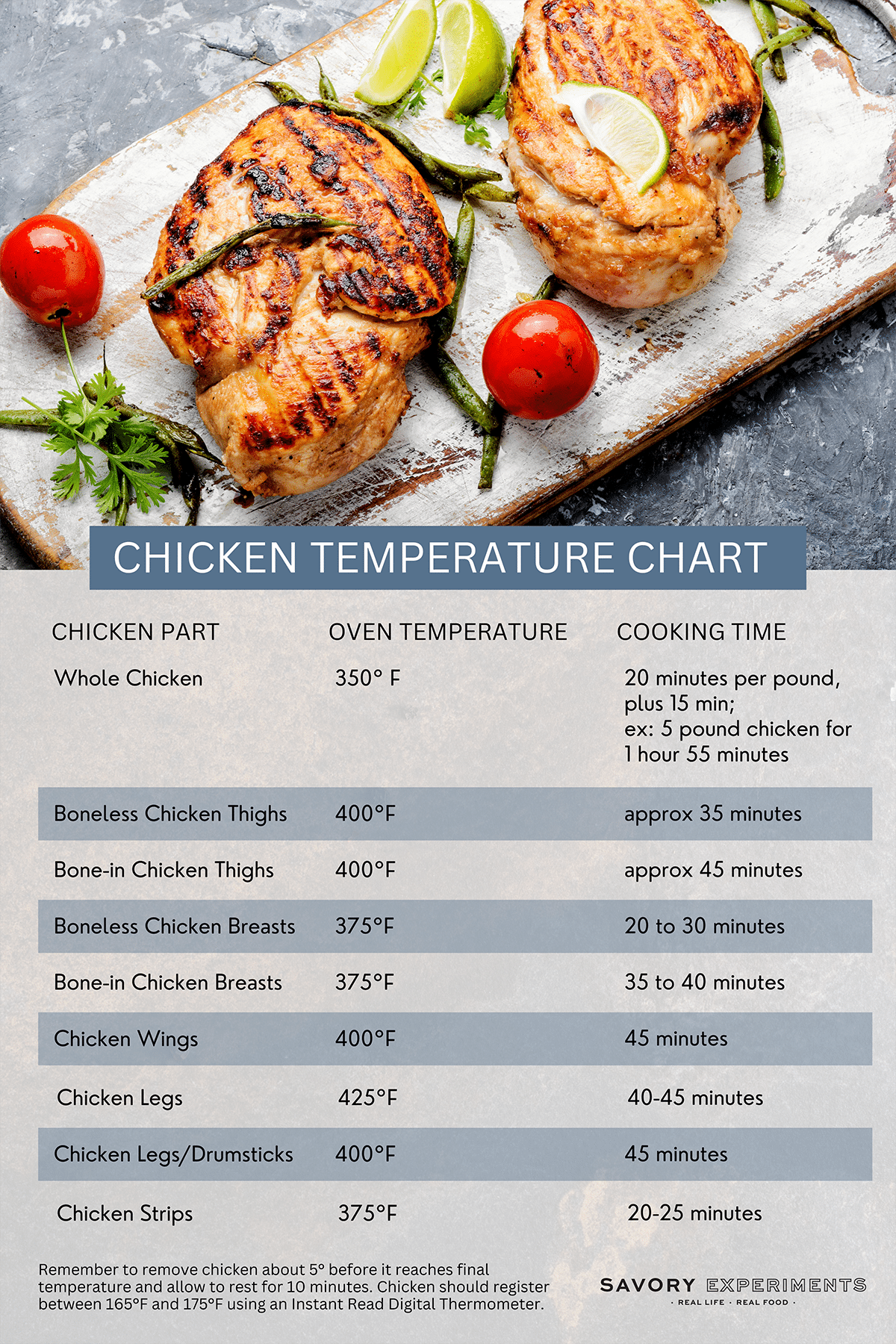
Chicken Temperature
It is one of the most asked questions in cooking: What temperature should chicken be cooked to?
Chicken is considered done and safe to eat when it reaches an internal temperature of 165°F (74°C). This temperature is recommended by food safety guidelines to ensure that harmful bacteria, such as Salmonella and Campylobacter, are killed, making the chicken safe for consumption. The best way to check this is by using a digital instant-read thermometer.
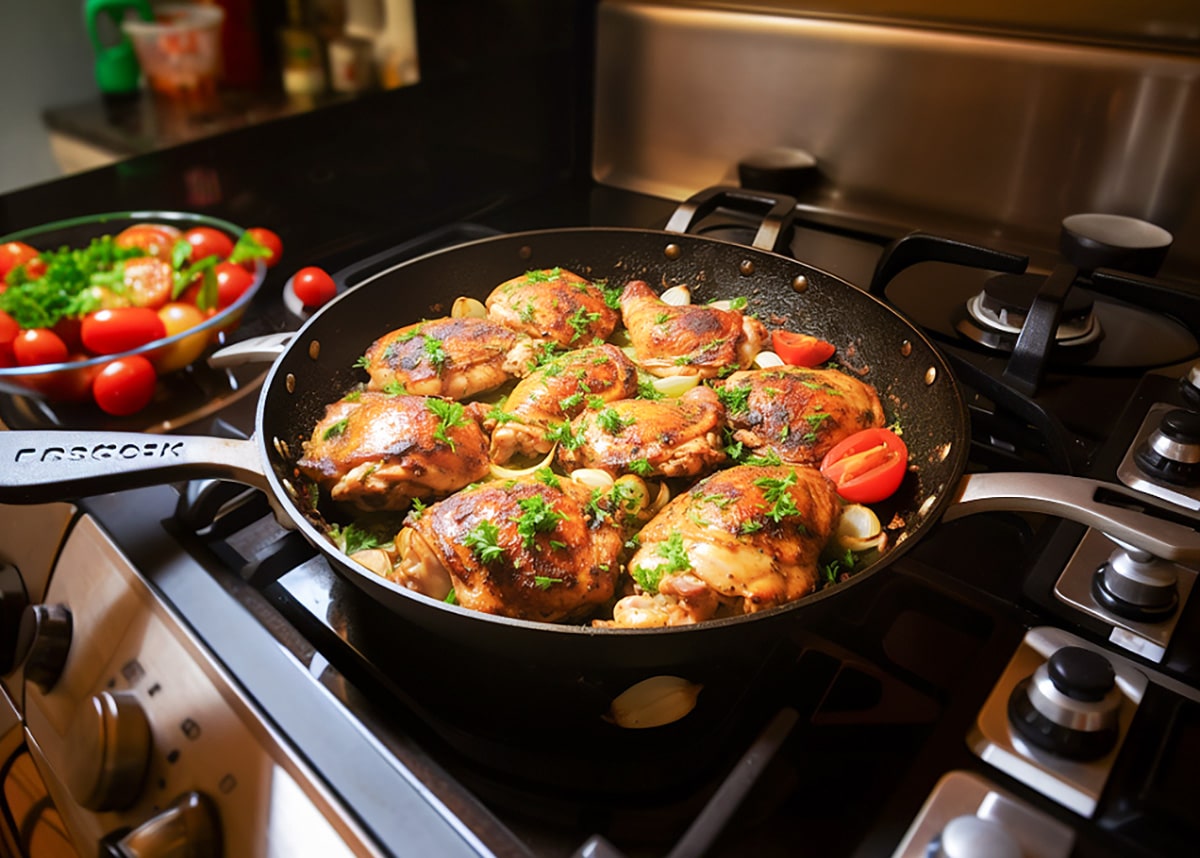
However, due to carryover cooking, you’ll want to remove the chicken from its cooking method at 157°F. During its resting period, the internal temperature of chicken will come to the full 165 degrees fahrenheit. If you get several reads on the way into the thickest part of the meat, use the lower temperatures, not the higher temperature, as your gauge for doneness.
When the chicken reaches this temperature, the color of the meat should be free from any pinkness and the juices will run clear. It’s important to use a food thermometer to accurately measure the internal temperature at the thickest part of the chicken, whether it’s a whole bird, chicken breasts, chicken thighs, chicken legs, chicken wings or any other cut at the end of the whole cooking and resting process.
It is not scientific to press the meat and check for “firmness”. We at Savory Experiments do not believe that “medium-rare chicken” is a thing and prefer to cook until no pink color remains to keep everyone dining safe, free from food poisoning and consuming undercooked or raw chicken.
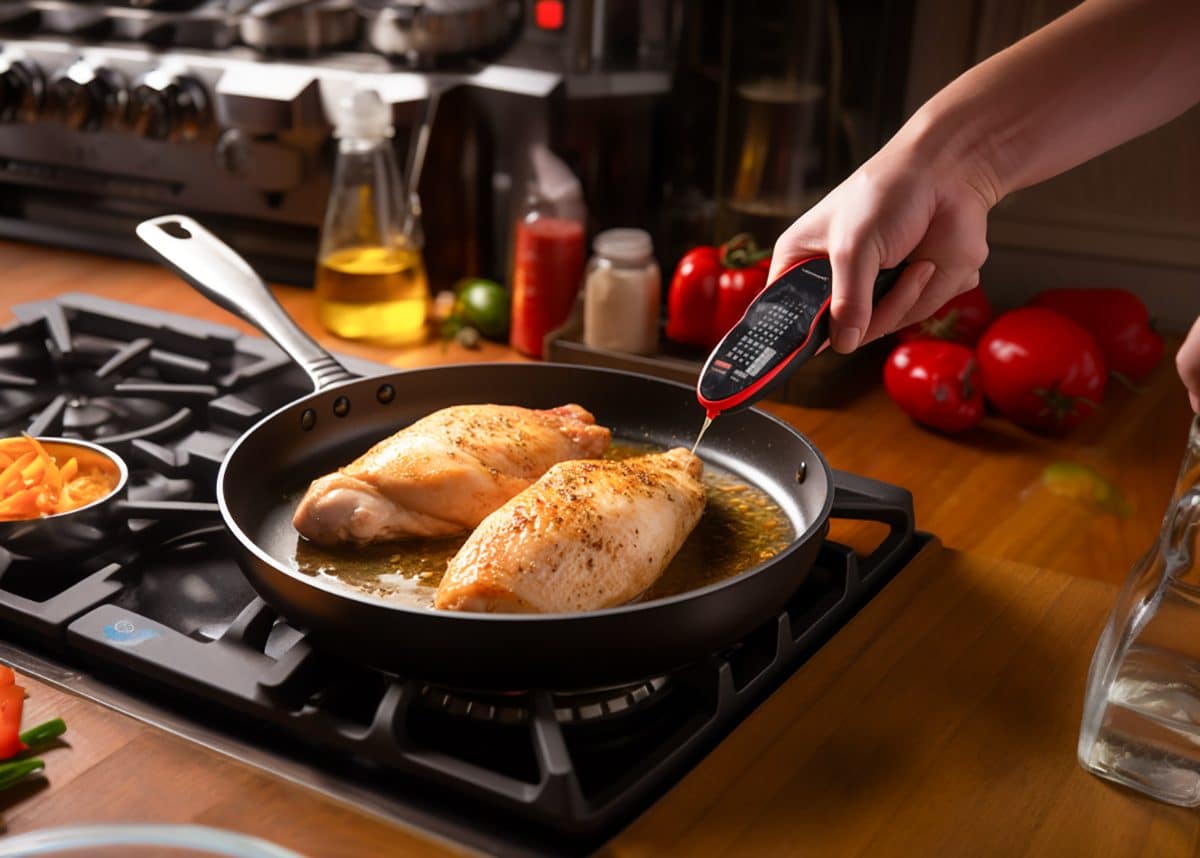
What Happens If Chicken is Undercooked?
Undercooking chicken can pose serious health risks, leading to foodborne illnesses. On the other hand, overcooking chicken can result in dry and tough meat, which is not ideal for taste and texture. Therefore, achieving the recommended internal temperature is crucial to strike the right balance between food safety and delicious, juicy chicken.
Do Dark Meat and White Meat Chicken Need the Same Temp?
Nope, white meat chicken and dark meat chicken do not need to be cooked to the same temperature. The reason for this is that white meat and dark meat have different characteristics and moisture content, which affects their ideal cooking temperatures for optimal taste and texture.
White Meat Doneness
White meat (breast meat), such as chicken breasts and wings, has less fat and connective tissue compared to dark meat, making it leaner and more prone to drying out if overcooked. To maintain its juiciness and tenderness, white meat is generally cooked to an internal temperature of 165°F (74°C).
Dark Meat Doneness
On the other hand, dark meat (thigh meat), found in chicken thighs and drumsticks, contains more fat and connective tissue, which contributes to its richer flavor and juiciness. Due to its higher fat content, dark meat can be cooked to a slightly higher internal temperature without becoming dry.
Many chefs and cooks prefer to cook dark meat to an internal temperature of around 170°F (77°C) to 175°F (80°C) to achieve a more tender and succulent result. This would mean removing dark meat from the cooking method at a temperature between 165°F and 170°F to allow carry-over cooking to work its magic.
What is the Best Digital Meat Thermometer?
There are a ton of digital thermometers on the market and they are all very good. Thermopop makes a really good one, but I also like this cheaper one from Amazon– it even has a temp guide on the handle.
Of course, you can get fancy and get the ones that connect to your phone, but for making chicken in the oven, I don’t need all those gadgets.
Honestly, as long as it actually works, any of them will do. What I would shy away from is the dial gauges. Unless you plan to cook the meat with the thermometer inserted, they take the temperature too slow and can be unreliable because home cooks take them out before they’ve actually reached the final temp.
Temperatures for Different Ways to Cook Chicken
What Temp to Grill Chicken?
When grilling chicken, the recommended temperature is medium-high heat, which is typically around 375°F to 450°F (indirect to direct heat). Preheating the grill to this temperature ensures that the chicken cooks evenly and develops a flavorful crust while retaining its juiciness.
Cook chicken to an internal temperature of 165°F (74°C) to ensure it is safe to eat. Use a meat thermometer to check the internal temperature at the thickest part of the chicken, and once it reaches the target temperature, remove it from the grill and let it rest for a few minutes before serving to allow the juices to redistribute throughout the meat for optimal tenderness.
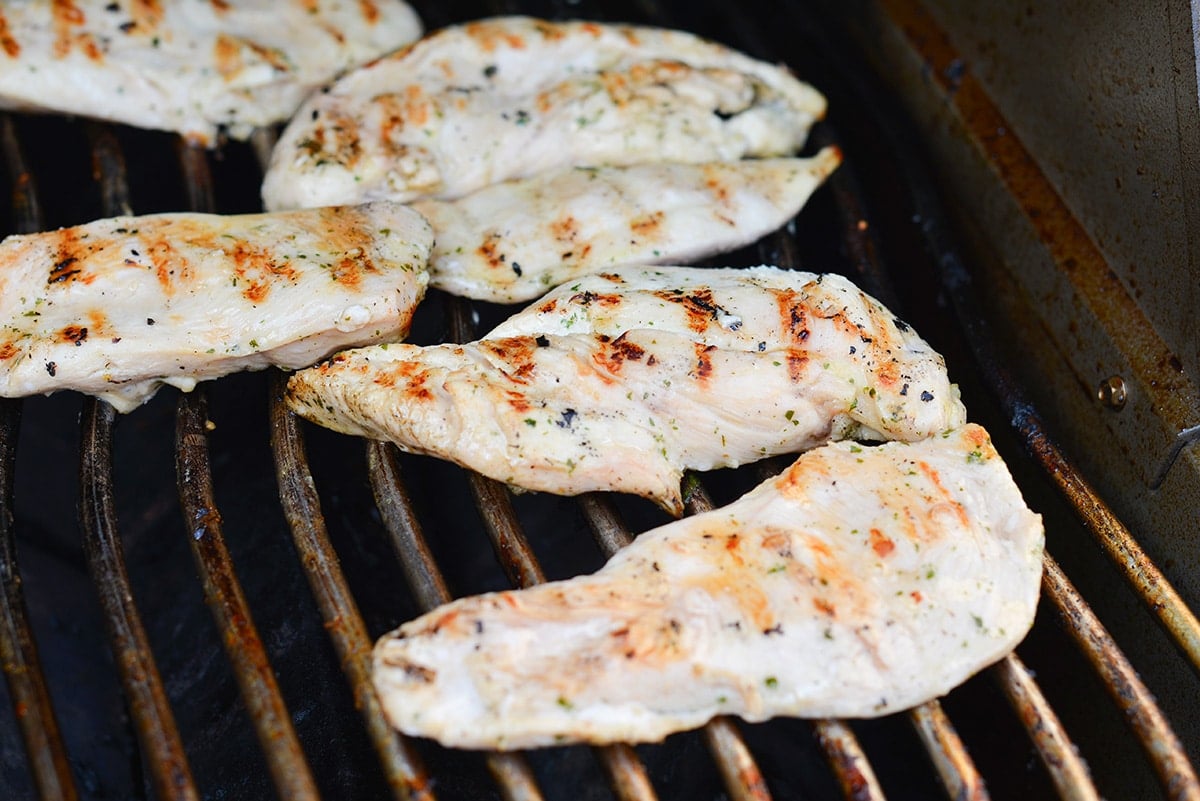
What Temp to Cook Chicken in a Pan?
The internal temperature for chicken in a pan (skillet) is also 165°F (74°C). When cooking chicken in a pan on the stovetop, the recommended temperature is medium to medium-high heat. This typically ranges from 350°F to 400°F (175°C to 200°C). Preheat the pan before adding the chicken to ensure even cooking and to develop a nicely browned exterior.
Also use a meat thermometer to check the internal temperature, there is no substitute for this. Remove it and allow it to rest before serving.
What Temp to Cook Fried Chicken?
Just like other methods of preparation, when cooking fried chicken, the internal temperature should reach 165°F (74°C).
Use a thermometer and go to the meatiest part of the chicken and well past the crunchy exterior. It should have a crispy and golden-brown exterior while remaining juicy and tender on the inside.
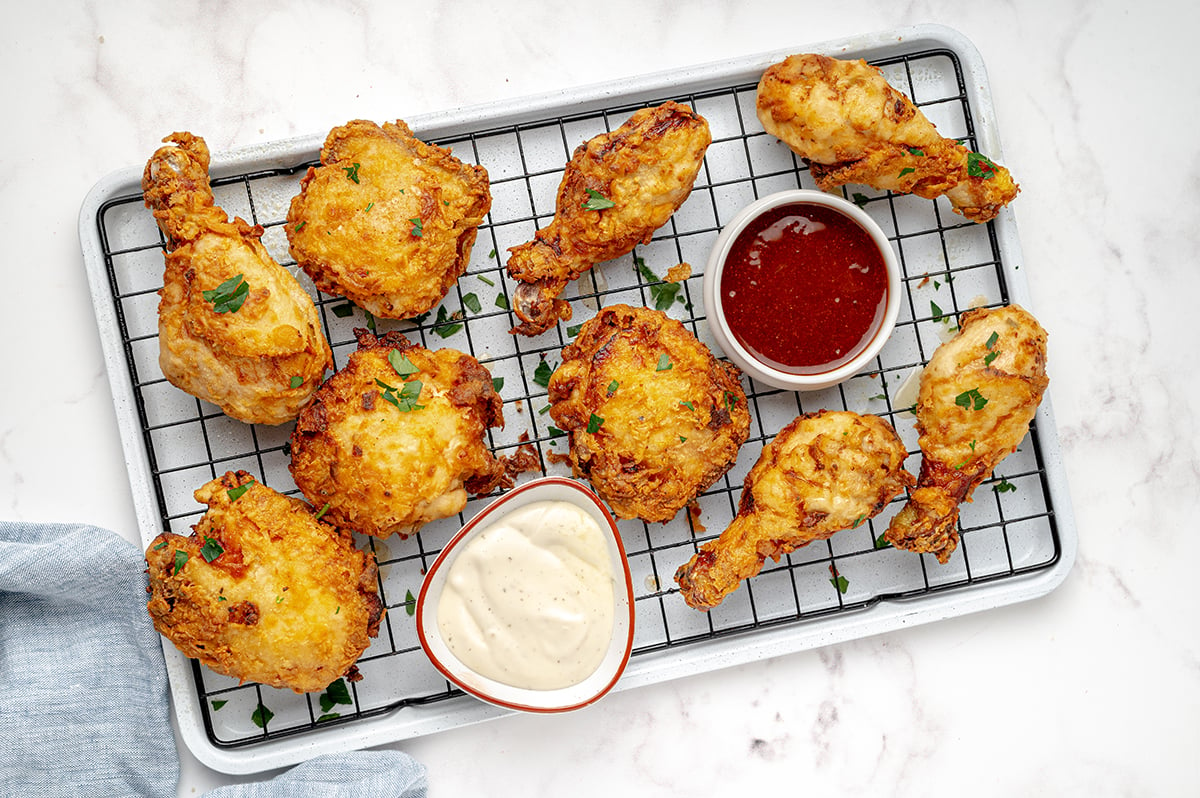
How to Check Sous Vide Chicken Temperature
The technique of sous vide means that the chicken is placed in a plastic bag and the air is removed. It is them submerged in water and cooked at a precise, low temperature for an extended period of time. In a sense, it is pasteurized cooking.
But if it is in a water tight bag, how do you know when it is done? First of all, the sous vide machine will be set to the temperature you need the meat to be and should come up to that exact temp. If you want to check it while in the bag, press the tip of the thermometer through the plastic and reseal the hole using this sous vide foam tape.
Most recipes will also call for a technique called a reserve sear, meaning that the chicken will be removed from the bag and seared at high heat to form a nice brown crust (also known as flavor and the Maillard reaction) and give you an opportunity to check the temp and correct, if needed, before serving.
Baked Chicken Temperatures
Next to just how to cook chicken, the next biggest questions is: what temperture to bake chicken breasts? And the answer is… the same! Cook chicken breasts to an internal temp of 165°F. This also goes for baked chicken tenders.
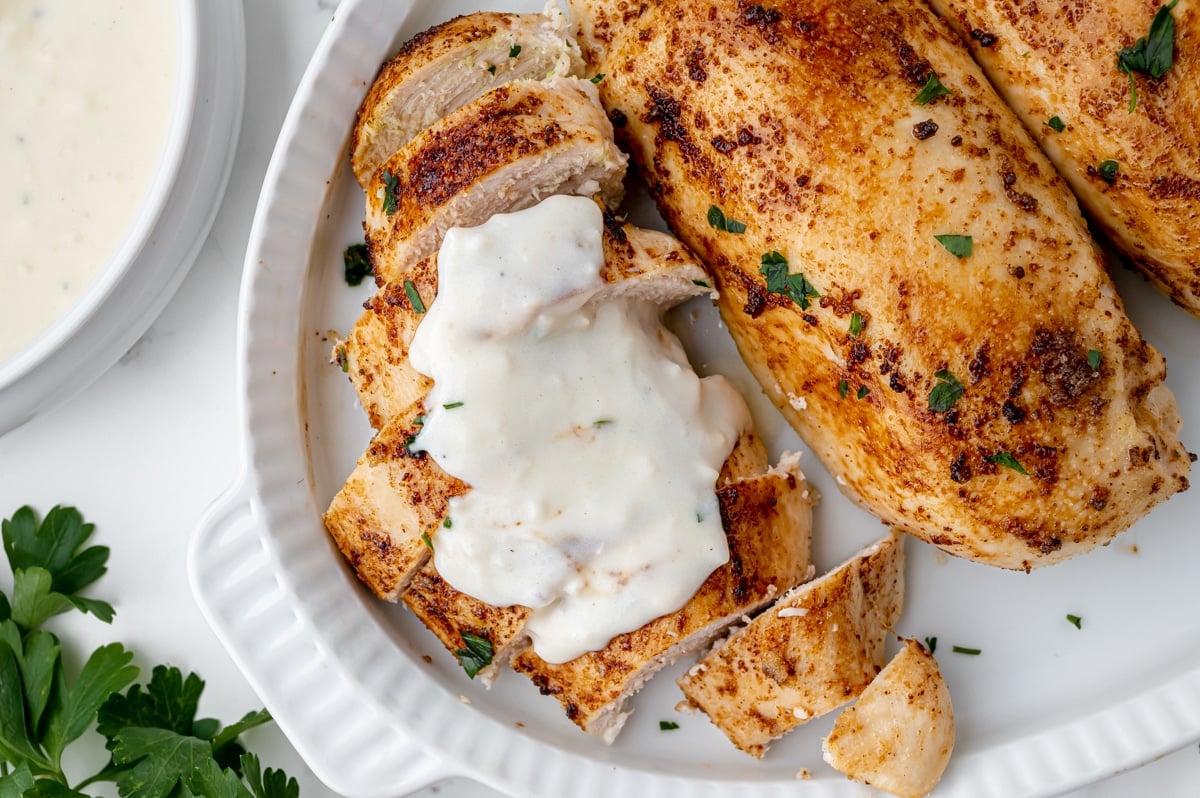
How Do You Check Internal Temperature When Cooking a Whole Chicken?
To check the internal temperature when cooking a whole chicken, follow these steps:
- Insert the thermometer correctly: Insert the thermometer probe into the thickest part of the chicken’s thigh, being careful not to touch the bone. The thigh is the slowest part of the chicken to cook, so checking the temperature there ensures that the rest of the chicken is cooked through as well.
- Avoid touching bones: Make sure the thermometer is inserted into the meat and not touching any bones, as bones can give a false reading and mislead you about the chicken’s doneness.
- Wait for a stable reading: Allow the thermometer a few seconds to stabilize and give you an accurate reading. Ensure you get a reading that is close to 165°F (74°C).
- Double-check if necessary: If you’re cooking a large chicken or if you are uncertain about the temperature reading, you can check the internal temperature in another spot, like the thickest part of the breast, to confirm that the chicken is fully cooked. Remember that the white meat and dark meat will need different temps.
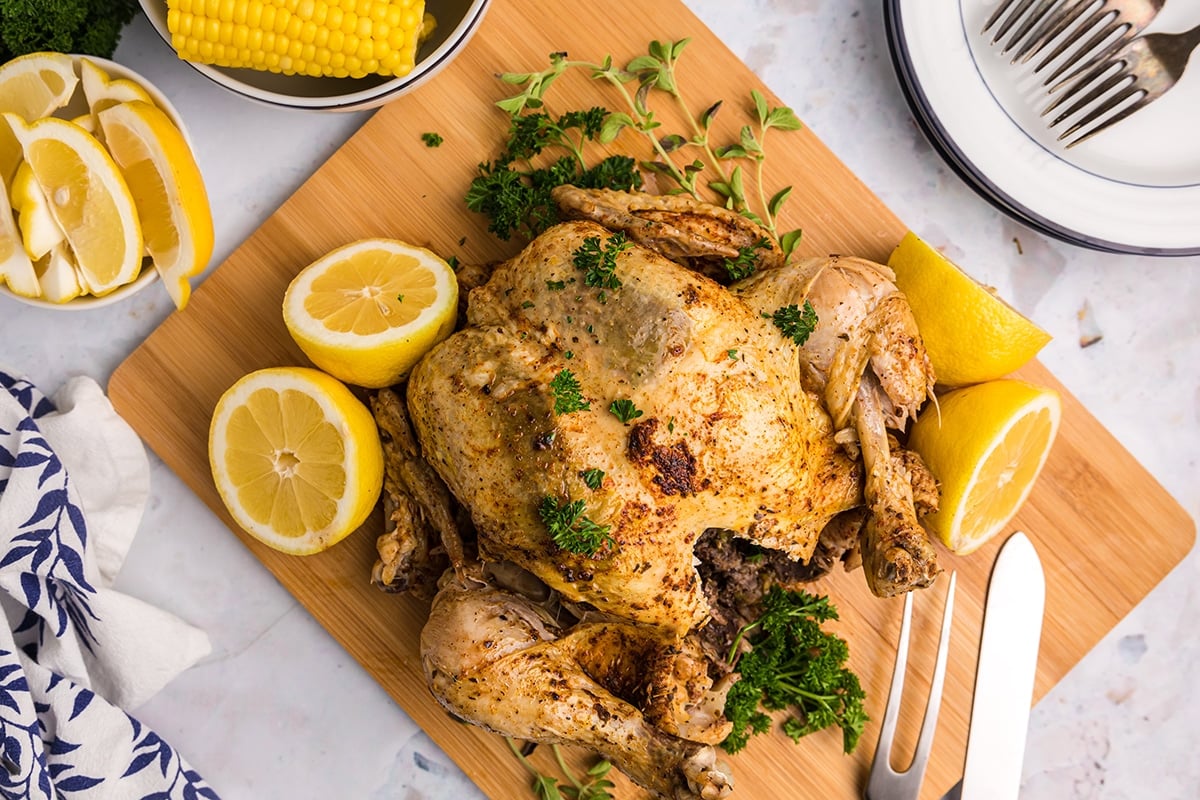
Why Do You Rest Chicken?
Resting chicken, or any meat, is an essential step in the cooking process that allows the meat to retain its juices and ensures a more flavorful and tender result. When you rest chicken, you remove it from the heat source and let it sit for 5 to 1o minutes before cutting or serving it. Here’s why resting chicken is important:
- Juices Redistribution: While cooking, the heat causes the juices in the chicken to move towards the center. Resting allows the juices to re-distribute evenly throughout the meat, ensuring that each bite is juicy and flavorful.
- Tenderization: Resting helps the muscle fibers in the chicken relax and reabsorb some of the released moisture during cooking. As a result, the meat becomes more tender and less chewy.
- Avoiding Dryness: If you cut into the chicken immediately after cooking, the juices will escape, and the chicken can become dry and less enjoyable to eat. Allowing the chicken to rest gives it time to reabsorb some of its lost moisture, keeping it moist and succulent.
- Food Safety: Resting also contributes to food safety. During the resting period, the internal temperature of the chicken may continue to rise slightly, helping to ensure that it reaches the recommended safe temperature of 165°F (74°C) throughout. This is called carry-over cooking and why we actually recommend taking it out at 157°F. Carry-over cooking will bring it up to the full temp.
Chicken Cooking Temperature Chart
This is a guide for cooking tender chicken. Cooking times will vary based on the chicken cuts and method of cooking. If making multiple pieces, check each piece individually. Always use a digital thermometer to check doneness.
Make sure to get the thermometer to the center of the chicken. Here you can see that the exterior and interior can vary greatly in temperature.
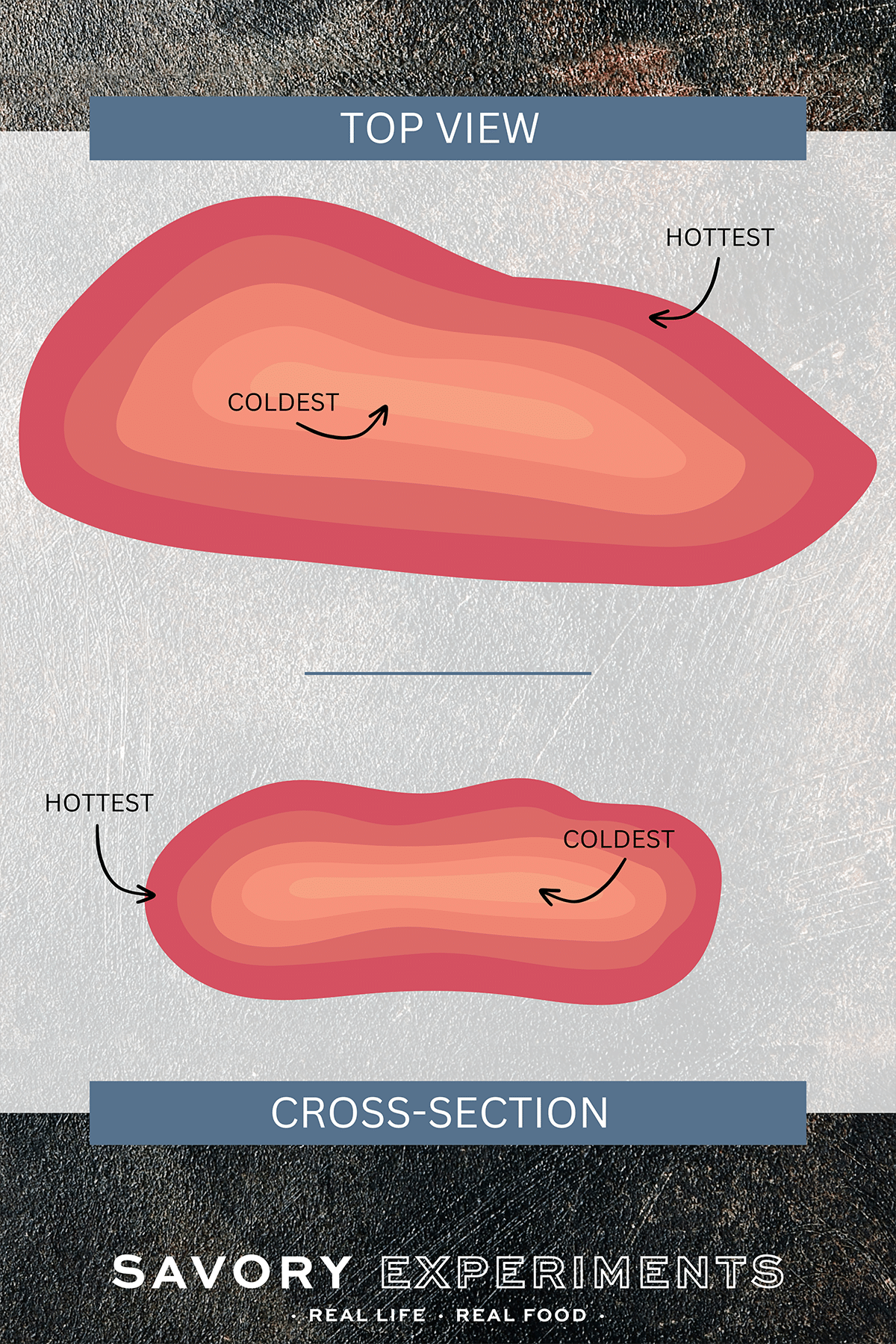
Tips for Cooking Chicken
Head into the kitchen knowing you’ve got this! But before you go, here are my top tips for cooking any type of chicken.
- Use a Meat Thermometer: Invest in a reliable meat thermometer to ensure that your chicken is cooked to the proper temperature for safety and optimal taste after resting. This prevents undercooking or overcooking the chicken and helps maintain its juiciness.
- Marinate, Brine or Season: To enhance flavor and tenderness, consider marinating the chicken in your favorite herbs, spices, and liquids before cooking. Alternatively, you can brine chicken in a saltwater solution to infuse it with moisture and extra flavor.
- Don’t Overcrowd the Pan: Whether you’re sautéing, pan-frying, or roasting chicken, avoid overcrowding the cooking surface. Giving the chicken enough space allows it to cook evenly and develop a crispy exterior.
- Rest the Chicken: After cooking, let the chicken rest for a few minutes before cutting or serving. Resting allows the juices to redistribute and ensures a more tender and flavorful result.
- Experiment with Different Cooking Methods: Chicken is versatile, so don’t be afraid to try various cooking methods such as grilling, baking, stir-frying, or even cooking sous vide. Each method brings out unique flavors and textures in the chicken.
- Things Change! Please remember that cooking time will depend on the cut of meat, size and cooking method. No recipe will ever be exact so use your best judgement and a thermometer to make sure you have the right temperature.
Best Chicken Recipes
Here are a few chicken recipe to get you started.
Chicken Piccata Recipe
Instant Pot Whole Chicken
Honey Lemon Garlic Chicken Recipe
Baked Chicken Thighs in Oven
Sweet and Sour Chicken
Slow Cooker Cowboy Chicken Recipe
Chicken Dijon
Marry Me Chicken Recipe
Baked Caesar Chicken Recipe
One Pan Honey Garlic Chicken
Buffalo Chicken Stuffed Peppers
Breaded Chicken Cutlets
Chicken Birria Taco Recipe
Creamy Mexican Chicken Casserole
Blackened Chicken
Chicken Gnocchi Soup
Chinese Almond Chicken Recipe
Broccoli Chicken Alfredo
Best Grilled Chicken Marinade
Homemade Chicken Noodle Soup (Crockpot Recipe)
Best Chicken Meatloaf Recipe
Creamy Asiago Chicken
Homemade Sesame Chicken
King Ranch Chicken Casserole Recipe
Easy Chicken Kiev
Chicken Pot Pie Casserole
Popcorn Chicken Recipe
Crispy Baked Chicken Tenders Recipe
Pretzel Crusted Chicken
Braised Chicken Thighs
Oven Fried Chicken
Beer Can Chicken Recipe
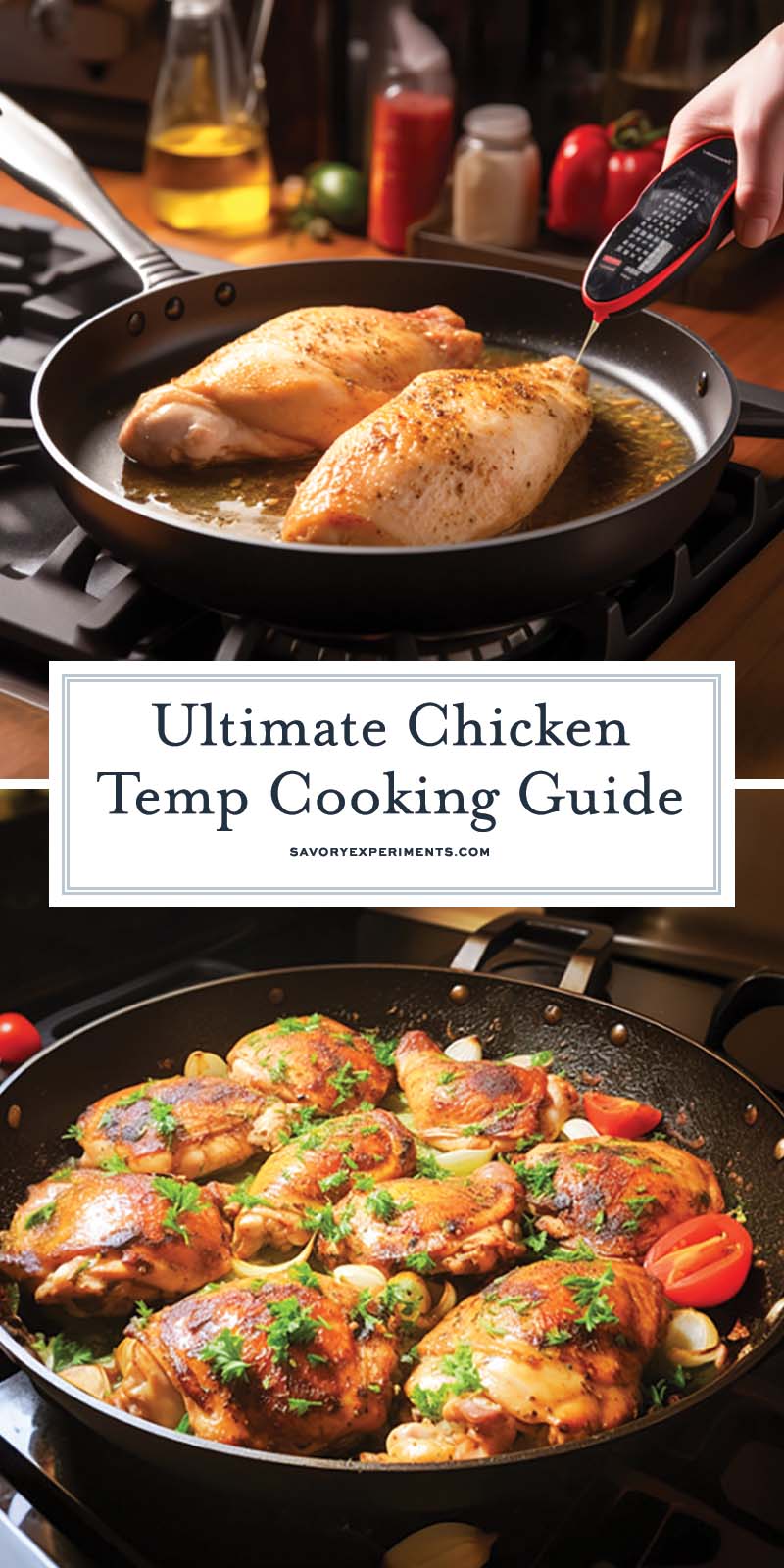


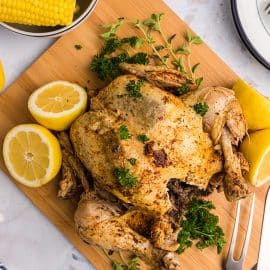
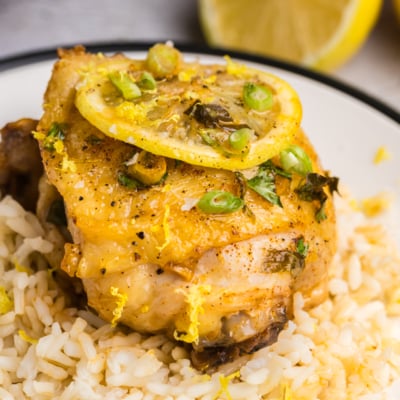
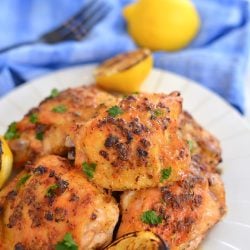
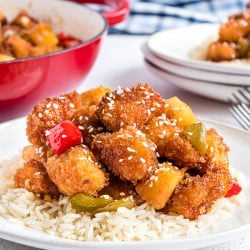

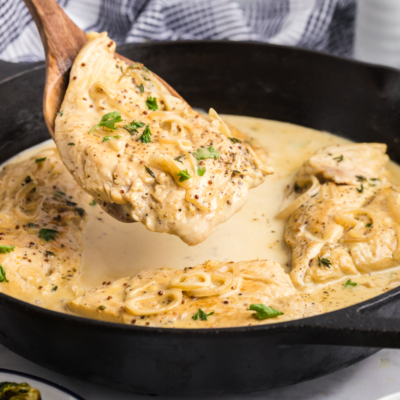
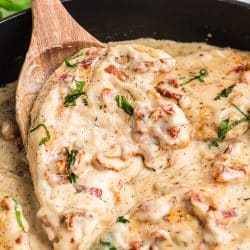
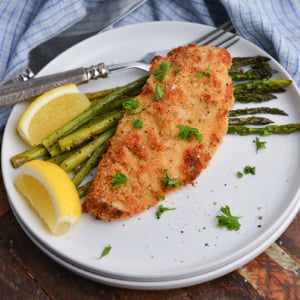
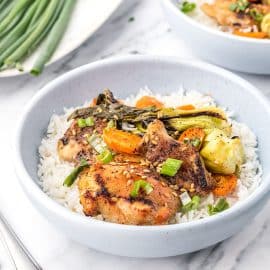
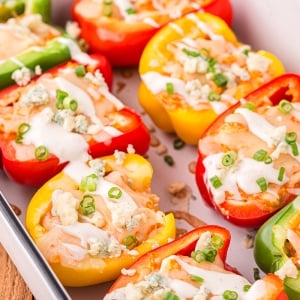
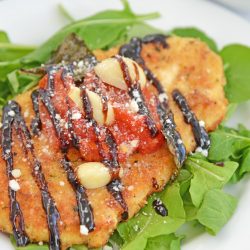
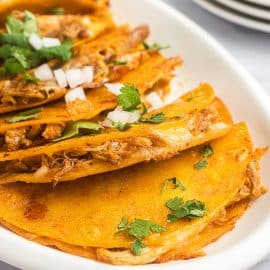
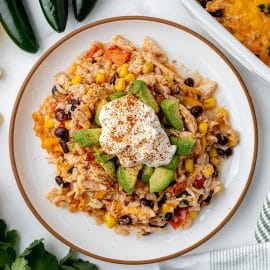
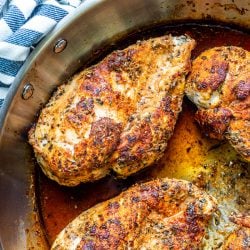
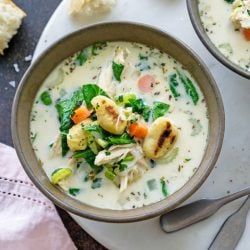

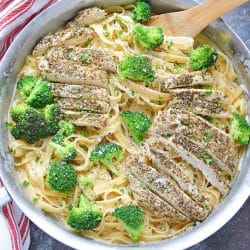
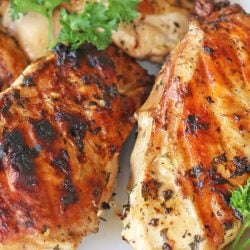
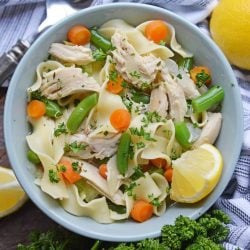
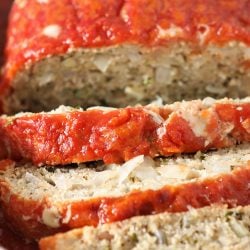
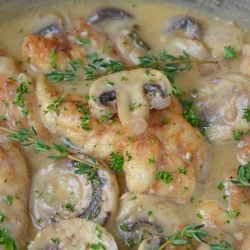
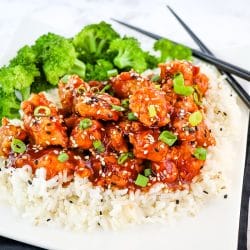
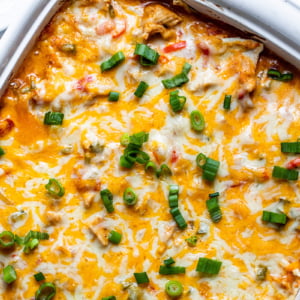
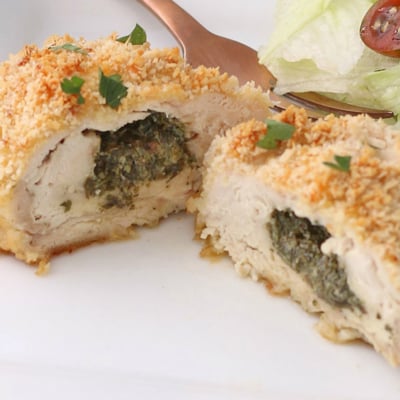


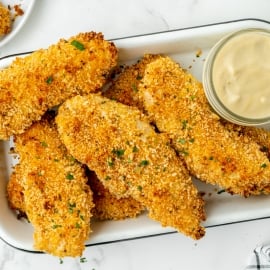
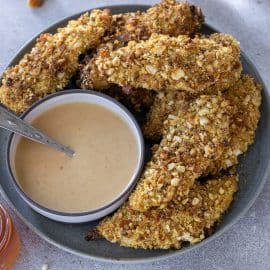
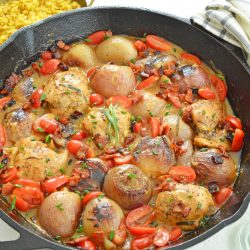
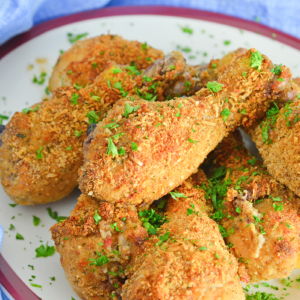
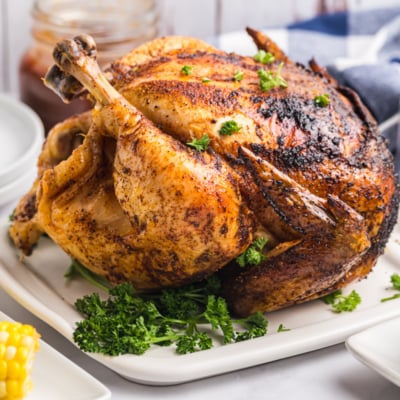
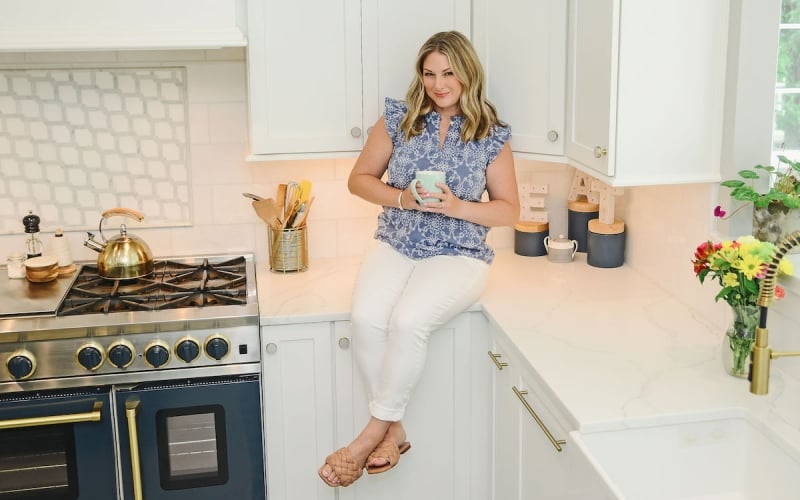
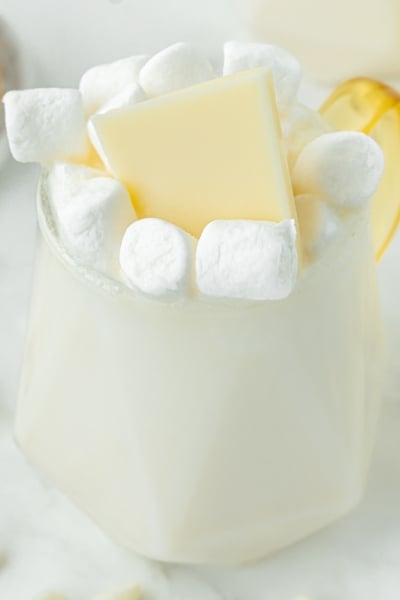
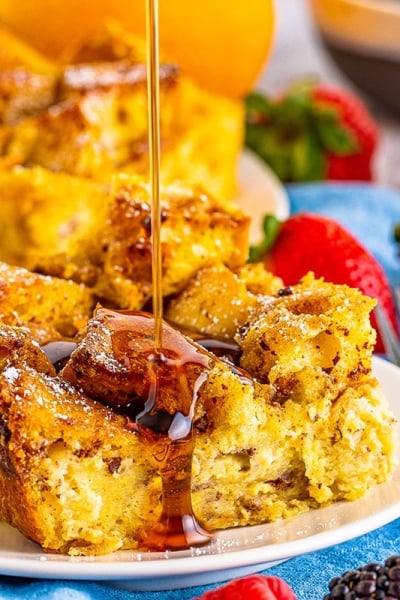

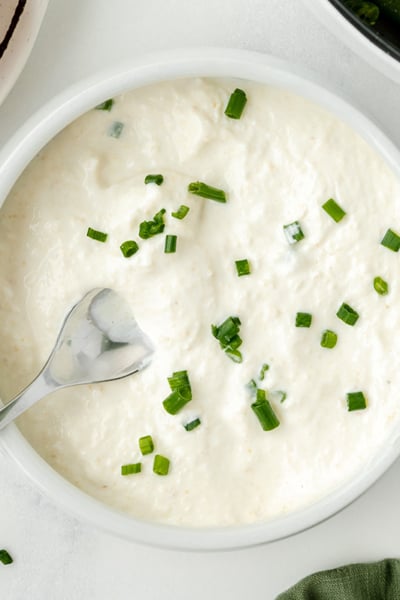













Cool read! I didn’t know chicken thighs were done at a different temperature!
This is such a helpful guide! I love that you have both the cooking temperatures and the internal temperatures of the chicken listed, as well as approximate cooking times. Thanks so much for sharing!
There’s so much good info here. I feel a lot more confident making chicken now with the info on how to tell when it’s done and not overcooked.
I really appreciate all the information in this post. I have book marked it for future reference.
This is so helpful to know! Bookmarking this post to reference for all my chicken recipes!